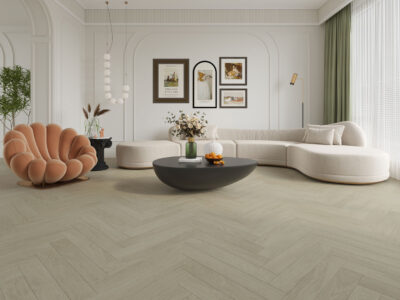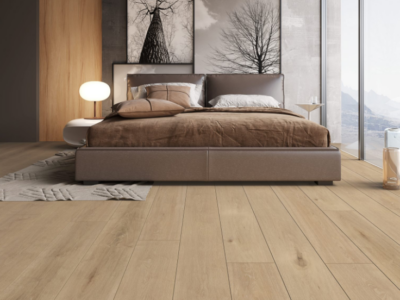Commercial wood flooring care is one of the most important routine tasks. Maintaining the beauty of wood floors in high-traffic these environments requires regular care and attention. By following essential care tips, you can keep your wood floors looking pristine for years to come.
It can be hard to maintain floors in busy areas.
We believe that commercial spaces need that extra help here and there to keep floors extra tidy.
So, let’s take a deep dive into wood care for busy-footed floors.
Understanding Wood Floors
Types of Wood:
Commercial wood flooring has various options, each chosen for its unique blend of durability and aesthetic charm. Among the top contenders, Oak, Maple, and Walnut stand out as popular choices.
Oak:
- Durability: Oak is renowned for its robustness, making it an ideal choice for high-traffic areas.
- Aesthetics: With a distinctive grain pattern and warm tones, oak adds a timeless elegance to any commercial space.
Maple:
- Durability: Maple is celebrated for its density and resistance to wear, making sure it lasts in busy environments.
- Aesthetics: The light, creamy colour of maple brightens spaces, creating an inviting atmosphere.
Walnut:
- Durability: While slightly softer than oak or maple, walnut’s hardness is sufficient for commercial settings with moderate traffic.
- Aesthetics: Its deep, rich hues and intricate grain patterns lend a luxurious and sophisticated touch to the ambience.
Types of Commercial Wood Flooring
Here at The Solid Wood Flooring Company, we specialise in floors for commercial settings with any budget. It’s important that we give you the best floor that suits your space and the amount of foot traffic you get.
- Solid Wood Flooring: This is crafted from single hardwood pieces, like those listed above. It’s not often used due to sustainability issues, so other options are preferred.
- Engineered Wood Flooring: Engineered wood flooring consists of a solid wood layer on top, supported by a fast-growing hardwood back. This allows the wood to expand and contract with changes in humidity and temperature.
- Vinyl Wood Flooring: Vinyl or LVT (Luxury Vinyl Tile) flooring, traditionally made of plastic, has evolved. Impervia, a rigid composite flooring similar to LVT, is now available as an environmentally friendly option with no harmful emissions.
- Laminate Flooring: Laminate flooring replicates the appearance of wood using a photographic layer under a clear protective layer. It is a cost-effective and low-maintenance choice made of high-definition paper and compressed with a medium or high-density fibreboard.
Preparing for Maintenance
Making sure your commercial wood flooring care can withstand high-traffic spaces requires proactive measures and thoughtful choices. The preparation and selection of the right finish contribute immensely to the overall care and resilience of your wood flooring.
Preventative Measures:
1. Strategically Placing Rugs and Mats:
These add some interesting visuals to the space and act as protective barriers, preventing direct contact between people’s shoes and the floor.
Tastefully placing rugs at entrances, hallways, and other busy zones can help your floor last that extra bit longer.
2. Using Furniture Pads:
Furniture is the biggest culprit in scratching the protective layers of your wooden floors.
These soft, protective pads are fixed to the legs of furniture, creating a buffer between the floor and any potential abrasions.
Regularly checking and replacing worn-out pads ensures the floor is constantly protected, particularly in areas where furniture is frequently moved.
Choosing the Right Finish:
1. Opting for Durable Finishes:
Durable finishes, such as oil-based finishes, create a strong protective layer on the surface. These finishes act as a shield, saving it from scratches, stains and general wear and tear.
UV-cured oil finishes, in particular, form a hard, resilient coating that is highly effective in high-traffic commercial settings, offering a glossy or matte appearance depending on preference.
2. Considering Eco-Friendly Options:
These finishes have lower levels of volatile organic compounds (VOCs), reducing the emission of harmful substances into the air.
Plant-based oils provide a protective layer while minimising the environmental impact, making them an eco-friendly choice for commercial wood flooring care.
Sustainability doesn’t have to come at the expense of performance, so it’s a viable and responsible option for businesses striving to reduce their carbon footprint.
Cleaning Routines for Commercial Wood Flooring Care
Daily and Light Clean
What You’ll Need:
- Microfibre flat mop.
- Alternatively: A vacuum cleaner with a soft brush head.
Steps for Daily Cleaning:
- Sweep or vacuum to remove loose dirt and debris.
- Damp mop the floor, and mop up any excess liquids.
- Wipe up spills immediately with a dry or slightly damp cloth.
Regular Maintenance
- Set a routine schedule to catch issues early: Consistent monitoring allows for proactive measures, addressing potential problems before they escalate.
- Check for scratches and wear: Identifying these issues early enables timely intervention and preserves the overall integrity of your wood floors.
- Use touch-up kits: These kits often contain colour-matched solutions that seamlessly blend with the existing finish, restoring the appearance of your floors.
- Professional sanding and refinishing: This approach involves removing the existing finish, sorting deeper problems, and applying a new protective layer. We recommend looking into professional services for this type of treatment.
Deep Cleaning
What You’ll Need:
- At least 40ml of Blanchon Natural Soap (white for white-finished floors and colourless for all other oil-finished floors).
- A flat mop.
- Hot, not boiling water.
Steps:
- Mix at least 40ml of soap with hot water, and have another bucket of hot water to rinse the mop.
- Soak the mop in the solution and squeeze out as much excess water as you can.
- Clean the floor whilst moving the mop in the direction of the grain.
- Re-soak the mop for every square metre, depending on the state of the floor.
- Once finished, allow the floor to dry completely before putting it to use.
Dealing with Spills and Moisture
When caring for your space, managing spills is crucial to having a commercial wooden floor.
You can easily keep your floor in top condition by taking quick action.
Immediate Steps:
1. Wipe Spills Promptly:
Time is of the essence when dealing with spills. Immediately wipe spills with a dry or slightly damp cloth to prevent liquids from penetrating the wood surface. Swift action minimises the risk of staining and ensures that moisture doesn’t seep into the wood fibres, preventing potential damage.
2. Avoid Excessive Water:
While cleaning spills, it’s essential to avoid excessive water on the floor. Wood is susceptible to warping when exposed to prolonged moisture. Use a well-wrung cloth during the cleaning process to ensure that water is effectively absorbed without saturating the wood. This helps maintain the structural integrity of the wood.
Wood Floor Refinishing
Signs for Refinishing:
1. Scratches Penetrating the Finish:
Over time, scratches may accumulate on the surface of your wood floors. If these scratches penetrate the finish and expose the bare wood, it’s a sign that refinishing is needed. Ignoring such scratches can lead to more extensive damage.
2. Dull or Uneven Appearance:
A dull or uneven appearance is indicative of wear and tear on the protective finish of your wood floors. This can result from foot traffic, furniture movement, or exposure to sunlight. Refinishing becomes necessary to restore the lustre and evenness of the wood surface.
Options:
1. Professional Refinishing:
For a complete overhaul of your wood floors, professional refinishing is a recommended option. Trained experts will sand down the existing finish, address any imperfections, and apply a new protective layer. Professional refinishing ensures a thorough restoration, extending the life and beauty of your wood floors.
2. DIY Options for Minor Touch-Ups:
DIY wood floor refinishing kits offer a practical solution. These kits often include touch-up solutions and protective coatings. While suitable for addressing small issues, it’s essential to recognise the limitations of DIY options and consult professionals for more extensive damage.
Sustainability and Eco-Friendly Practices
Commercial wood flooring care comes with its own set of responsibilities. As a business or open property, it’s up to you to make decisions that help decrease environmental strain.
By incorporating eco-friendly products and responsible maintenance, you can ensure that your wood floors align with environmental consciousness.
Eco-Friendly Products:
1. Low-VOC or VOC-Free Finishes:
Opt for finishes labelled as low-VOC (Volatile Organic Compounds) or VOC-free. These formulations emit fewer harmful substances into the air, contributing to better indoor air quality.
Low-VOC or VOC-free finishes are environmentally responsible choices that promote a healthier and more sustainable living and working environment.
2. Environmentally Friendly Wood Floor Cleaners:
Choose wood floor cleaners specifically designed to be environmentally friendly. These cleaners typically have minimal impact on ecosystems and water sources.
Look for products with biodegradable ingredients, ensuring that their disposal has minimal environmental adverse effects.
Responsible Maintenance:
1. Recycle or Repurpose Wood Flooring Materials:
Whenever possible, explore recycling or repurposing options for wood flooring materials. Recycling wood reduces the demand for new resources.
Consider repurposing wood planks into furniture or other decorative elements, extending the lifecycle of the material and reducing waste.
2. Support Suppliers Committed to Sustainable Sourcing:
Choose wood flooring suppliers committed to sustainable sourcing practices. This involves harvesting wood from responsibly managed forests, ensuring the conservation of biodiversity and the well-being of ecosystems.
Suppliers with certifications such as Forest Stewardship Council (FSC) or other recognised sustainability standards demonstrate a commitment to ethical and environmentally responsible practices.
Additional Considerations:
1. Energy-Efficient Manufacturing:
Opt for products produced in energy-efficient facilities, minimising the carbon footprint associated with their production.
2. Reclaimed Wood Options:
Reclaimed wood brings a unique character to your floors and repurposes existing materials, reducing the need for new timber extraction.
3. Community and Environmental Initiatives:
Support brands and manufacturers actively involved in community and environmental initiatives. Companies engaged in tree planting, habitat restoration, or other eco-friendly projects contribute positively to the environment.
Final Thoughts
It’s so important to focus on commercial wood flooring care as much as you can, especially because of the risks of wear and tear over time.
For high-quality commercial wood flooring options, visit The Solid Wood Flooring Company. Upgrade your commercial space with durable and beautiful wood flooring today!
Related News Stories

Laminate Flooring as a Smarter Specification Choice
Read more
Is Laminate Flooring Suitable for Commercial Projects? What Architects and Contractors Need to Know
Read more
Industry insights: How Trident Laminate solves flooring challenges in high footfall environments
Read more
Why Developers Are Choosing Trident Laminate Flooring
Read moreJoin our mailing list
Receive the latest news, offers and inspiration straight to your inbox.
